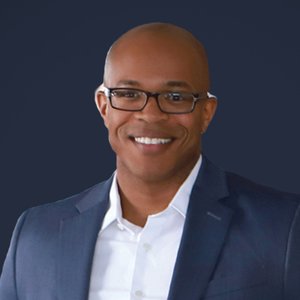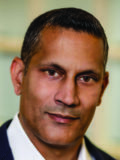
Nate Gibbons, CLFP,
Chief Experience Officer,
QuickFi
Has anyone noticed that the phrase, ‘Hindsight is 20/20’ is seldom used anymore? Recognizing that we don’t always see clearly in the moment, we used to use this adage to justify decisions that later proved to contain blind spots. The time and space since the initial decision caused a perspective change; the perspective change caused the blind spots to become less blurry. When used purposefully, hindsight became a mechanism to hone problem-solving skills and improve future outcomes.
Is hindsight still relevant?
We are at a unique time in history where human interaction, technology, business and many other societal elements are simultaneously evolving at an alarming rate. For many, this has made forecasting and strategic planning a frustrating and futile pursuit. Because of how quickly our needs and preferences are changing, the insights once offered by hindsight are disintegrating faster than they can be realized. In fact, for some, hindsight

— the practice of looking backward — has ironically become the very thing preventing business leaders from effectively planning for the future.
Does this mean the past no longer serves its purpose in preparing us for the future? Not necessarily, but when rapid social and technological change converge, there is wisdom in turning to those whose perspectives and leadership acumen might help improve our vision of the past, present and future. With this in mind, we spoke with a few industry leaders about trends that could cause fundamental changes in commercial lending … if they haven’t already.
The consumerization of commercial lending
For consumers, the look and feel of loan transactions has changed drastically. In fact, for nearly two decades, individuals have been able to apply for and consummate five and six-

figure loans in a completely digital manner without ever interacting with a loan officer. Companies like Rocket Mortgage and Affirm have conditioned consumers to expect a certain level of autonomy and efficiency when engaging with financial institutions.
For better or worse, consumer expectations have migrated into the B2B space and this migration started well before the global pandemic. It was in 2012 that Harvard Business Review cited a report explaining the reason behind shifts from “traditional” B2B selling and marketing strategies to more digital approaches. But applying consumer experiences to the commercial arena isn’t as simple as it sounds.
When asked whether commercial lending is becoming consumerized, Justin Nielsen, CEO, Onset Financial, says, “At the moment, I disagree, but … in the future, that will change.

From a dollar perspective, there’s a lot more risk involved in commercial lending.”
Nielsen believes this is why, when considering digital contracts and “app-based borrowing programs,” adoption is much slower in commercial lending — particularly for multi-million-dollar transactions. “I don’t see [commercial lending] becoming consumerized, but what I do see is that processes are [being] perfected at the consumer level, and as [lending institutions] learn how to blend risk mitigation with those processes, I think it’ll become more uniform and more standard,” Nielsen says.
Linda Redding, head of Equipment Finance at J.P. Morgan Commercial Banking, spends much of her time overseeing comprehensive, uniquely tailored finance transactions and agrees that the transaction size is an important factor. “I don’t see the consumerization of the commercial banking product,” Redding says. “The commercial banking suite of

solutions is a very highly customized suite of products that are tailored to specific client needs. I don’t see that going away.” Redding does, however, recognize both the basics, and evolution of customer preferences. “Clients want ease of execution,” Redding says. “And the digital piece of it … is going to become a more important element of the delivery of the solution.”
To Redding, rapidly changing customer preferences do not all necessarily equate to self-service or even instant gratification. Using the example of a middle-market business that wants to finance a new plant, Redding explained how this company would likely not have the internal resources or expertise required to identify, structure and execute this type of complex transaction. Redding states that it’s “our ability to deliver solutions that are very holistic” that takes the highest priority from the client perspective. Redding notes this includes being mindful of “how the documents might appear, how we might handle the funding, and what the customer service might look like.” Ultimately, Redding believes that “as an industry, we have to meet our clients where they are.” And while her efforts are largely directed towards complex, specially tailored transactions, she believes the diversity of business types throughout the commercial lending industry can help J.P. Morgan and other industry players learn from each other and adapt as customer expectations evolve.
Kiran Kapur, CEO, 36th Street Capital, shares the belief that the transaction size is a major barrier to widespread consumerization in commercial lending. However, for small-ticket B2B transactions, Kapur says, “A lot of that has already been going on. It has for a while.” Regarding commercial lending institutions, Kapur adds, “They’ve gone through great lengths to use technology to transact with customers and make it as seamless as they can.” Kapur cites examples including auto-population of documentation, streamlined order management capabilities and more efficiently delivering pricing and finance arrangements to customers. According to Kapur, such offerings are not suitable for large-ticket transactions because, in his words, “They’re complex … and involve real people and intellectual effort.”
We might conclude that consumerization has not taken hold in commercial lending — at least not among large-ticket transactions. If this is true, how long will this continue to be the case? Will industry players use historical consumer developments to shape their stance on B2B offerings? Are there other phenomena that might impact the trajectory of the equipment leasing and finance industry? Marcio Pedroso. president, Volvo Financial Services seems to think so.
The role of technology & digital products
“Decarbonization and the introduction and adoption of commercial electrical products are key topics,” Pedroso says. Few would argue that the environmental impact from technological innovations are of tremendous interest to individual consumers and business customers alike. But according to Pedroso, companies like Volvo will need to make major organizational changes if they want to be relevant in these areas, and, unfortunately, prior experience may not help. In certain cases, this will require creating entirely new products and solutions. “The product, infrastructure and charging needs will require different support and expertise,” Pedroso says.
Redding agrees that past experiences may be difficult to employ in “a landscape that continues to change at a rapid pace [where] things we’ve never seen before get introduced into it.” One of the questions Linda regularly asks herself is: “How do we maintain long-term relevance in light of the rapidly changing financial services marketplace?” This question seems fitting given the increasing amount of capital and digital currency throughout the world. And while an immediate answer has not presented itself (yet), Redding is confident that one eventually will. “It’s a dynamic industry, and I am sure we will continue to evolve to meet new challenges.”
The human side
While developments in tech will undoubtedly have a long-term impact on the leasing and finance industry, so too will developments on the human side of commercial lending. But as we all know, finding high-caliber individuals is no easy task. Kapur knows this all too well. When considering the human side of the industry — particularly it’s more seasoned members, Kapur finds himself wondering, “Where is the up-and-coming talent?”. He also wonders, “Is this industry attractive enough to bring in younger talent relative to other options that talent has?” Kapur believes that the infusion of emerging talent should remain a high priority. However, he is not oblivious to the difficulties of keeping high-potential individuals engaged and the pandemic hasn’t made things easier. “We’ve gone through all sorts of shifts in terms of work habits, work expectations,” Kapur says. He believes strong employee engagement can be achieved through a flexible work environment and plenty of opportunities for employees to learn from others with more experience.
Nielsen is also well acquainted with the human implications of the current environment. Throughout Nielsen’s career (spanning nearly 25 years), he has observed many significant moments throughout history, citing Y2K, the 9/11 attacks, the Great Recession, and several others. What he has also observed are the ways in which people respond to difficult situations. “There is always adversity,” Nielsen says. “The professionals that are able to evolve and adapt to changing circumstances will continue to succeed and thrive. History is constantly evolving. It’s constantly changing — oftentimes adversely. But the true great leaders are able to convert adversity into opportunity.”
Turning problems into progress is certainly the hallmark of a great leader, but how does one develop this skill among employees — especially given the sheer number of challenges we’ve experienced in recent years? Have the times we’re in made it harder to lead?
Hardships caused by the pandemic have caused many to see the world differently — including their work. Because of this, Nielsen believes, “We have to further improve our culture and create an even more meaningful employee experience in the workplace.” At Onset, this means placing more emphasis on what gives employees a sense of purpose. For example, once a month, Onset closes the office and allows employees to work at a local charity. According to Nielsen, “It gives them a meaningful feeling that’s much greater than doing equipment lease transactions. They’re enthusiastic and excited to come into the workplace because we’re building more of an experience than a ‘job.’”
Recent studies by Accenture1 have revealed that employees are much more engaged and respond more favorably to stress when they feel a sense of purpose, and when they trust those with whom they work. While some are finding new ways to keep their employees engaged, others are leaning on previously used methods. “Listening to employees, collaborating on solutions and being supportive are critical to effective leadership. Trust is fundamental,” Pedroso says. He is also intentional about continually investing in the development of his employees — an approach that enables them to realize ongoing success in their careers.2
Redding also uses time-tested methods of leadership but has tweaked her leadership approach following the pandemic. “I’ve had an opportunity to really double down on connection and communication. Fundamentally, that’s a really critical role that leaders in all organizations play today,” Redding says. She believes that the expansion of remote work has required leaders to be more intentional about checking in with their employees. When doing so, she encourages leaders to talk not only about work, but about other things that might matter to colleagues. “Everybody’s in a really different spot mentally, emotionally, potentially physically coming out of the past two years,” Redding says. “In any large organization, I think there’s an opportunity for the leaders to think about how we make this organization feel smaller.” Redding achieves this through intentional, personal connection with her colleagues.
A new way of thinking
We are living in one of the most exciting times in human history. With the myriad of new challenges comes an equal number of opportunities that did not previously exist. Perhaps seizing these opportunities is less about the extent to which we rely on the past, and more about the extent to which we rely on each other. As evidenced by the leaders we interviewed, our industry is full of bright, resilient, unique individuals whose shared perspectives will become increasingly important over time. If we can leverage this invaluable resource and become more agile learners, perhaps someday we’ll find ourselves saying, “foresight is 20/20.”
1Shook, Ellyn and Smith, Christie, “Organizational culture: From always connected to omni-connected,” Accenture, 2022.
2“Human Connection and Trust Unlock Productivity, Retention and Revenue Growth, Accenture Research Finds,” Accenture, May 24, 2022.
About the author: Nate Gibbons is Chief Experience Officer at QuickFiwhere he oversees the company’s strategy for customer interactions and the overall customer experience.